The Mississippi River is one of the world’s major river systems in size, habitat diversity and biological productivity. It is the third longest river in North America, flowing 2,350 miles from its source at Lake Itasca through the center of the continental United States to the Gulf of Mexico. As part of our summer RV trip my wife, Sue and I, decided to travel along the river from its headwaters in Lake Itasca down to New Orleans. This mighty river drains a watershed area covering about 40% of the continental U.S., as shown in river map below.

After driving north along the California, Oregon and Washington coastline, we headed due east thru Glacier National Park and onto Cass lake, Minnesota. We spent a view days there, driving over to see Lake Itasca and the source of the Mississippi River.
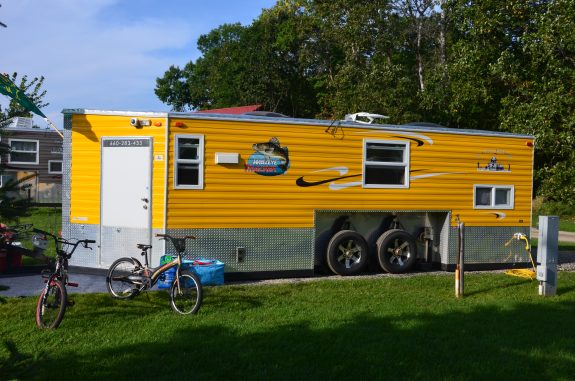 We saw several of these local RV products; called Ice Castle Fish Houses, which are made to be taken out on the frozen lakes for ice fishing in the winter. These are trailers that are raised up from the wheels and axles for towing, but drop down to the ground once you are at your camp / fishing spot.
We saw several of these local RV products; called Ice Castle Fish Houses, which are made to be taken out on the frozen lakes for ice fishing in the winter. These are trailers that are raised up from the wheels and axles for towing, but drop down to the ground once you are at your camp / fishing spot.
Labor Day weekend, we ran into thousands of motorcycles rallying all along the river in Iowa and Illinois. We also found it difficult to find camping near
the river that was not impacted by the railroad lines running north and south on both sides of the river! As we all know, the train horns, which are sounded at every railroad crossing, are distinctive and annoying if you are trying to sleep.

We stopped along the way at the first dam across the Mississippi in Little Falls, Minnesota, and visited Charles Lindbergh’s home and the power house that is run by turbines in the falls. The town is still very much a farming community, and the river is used to ship produce south to St. Louis.
We continued south to the corner of Davenport, Iowa, and Moline, Illinois. We spent the day at John Deere Pavilion. We spent the morning exploring the many pieces of Farming machinery the John Deere company is famous for. We also saw many other pieces of machinery that we did not know they had solutions for, i.e. harvesting tree for wood mills, harvesting cotton, automatic lawn mowing system. They offer fully integrated farm equipment management systems, with full GPS guidance and position of seed planting devices. Today’s farms are now run with very advanced navigation and M2M environments.
is famous for. We also saw many other pieces of machinery that we did not know they had solutions for, i.e. harvesting tree for wood mills, harvesting cotton, automatic lawn mowing system. They offer fully integrated farm equipment management systems, with full GPS guidance and position of seed planting devices. Today’s farms are now run with very advanced navigation and M2M environments.
The next day we visited the Rock Island Arsenal Museum. There are 3 National Arsenals, each created in the early 1860’s, One in Columbus, Ohio another in Terre Haute, Indiana and the other here in Rock Island, Illinois. This Arsenal was constructed in 1862 and became fully operation during the civil war, in fact it was a notorious prison for confederate soldiers. There is a cemetery for confederate
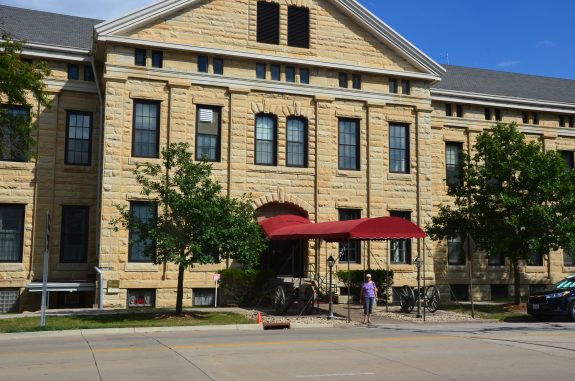 soldiers, who died in the prison on the grounds of the arsenal. The Arsenal over the past 160 years has provided the guns needed by the US Army and other military commands. During WWII employment at the Arsenal peaked at 18,467 employees, of which 32% were woman. Many of the innovations in design and production of fire arms were created by the engineers at the Arsenal. Still many private companies, like Remington, produced many of the rifles contracted for by the Arsenal.
soldiers, who died in the prison on the grounds of the arsenal. The Arsenal over the past 160 years has provided the guns needed by the US Army and other military commands. During WWII employment at the Arsenal peaked at 18,467 employees, of which 32% were woman. Many of the innovations in design and production of fire arms were created by the engineers at the Arsenal. Still many private companies, like Remington, produced many of the rifles contracted for by the Arsenal.
Visit to Mark Twain’s Boyhood home town – Hannibal, Mo.
Today we drove into town, from the Mark Twain Cave Campground, to explore Hannibal, Mo. This town grew on the banks of Mississippi River in the early 1800’s to support the steamboat traffic and associated commerce; i.e. lumber, farm animals and cotton. The town is famous for being the boyhood home of Samuel Clemens; who used the pen name Mark Twain. He only lived there for about 13 years before he left with his brother to Nevada, and continuing to work a variety of jobs, including steamboat captain. When he was 37 he started to work on one of ma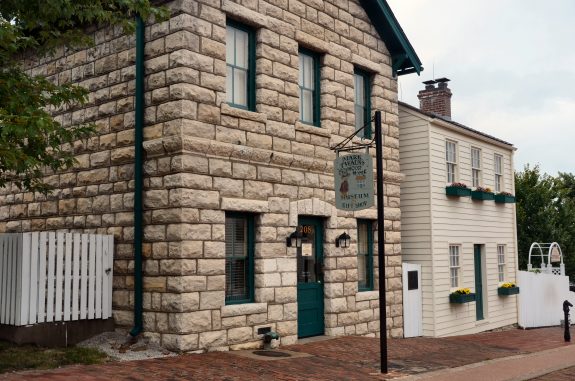 ny classic books he is famous for, Tom Sawyer, Huck Finn, Prince & the Pauper, etc. We spent most of the morning visiting the Mark Twain Museum and the Mark Twain Interpretative Center. We purchased a resource CD entitled ” Mark Twain – Words & Music ” with word and music by several celebrities, including Clint Eastwood! On Saturday, as we drove along the Mississippi on route 79 we listened to this CD which is a biographical over view of his life and works, augmented with old and modern songs. We saw several Original Norman Rockwell Paintings he did as part of the project to produce a synopsis of the book “Tom Sawyer”. The museum has numerous photos, letters and articles collected by Mark Twain’s wife during his life time. When you view these items, you are again impressed by the genius of this author and why he is an American Original author.
ny classic books he is famous for, Tom Sawyer, Huck Finn, Prince & the Pauper, etc. We spent most of the morning visiting the Mark Twain Museum and the Mark Twain Interpretative Center. We purchased a resource CD entitled ” Mark Twain – Words & Music ” with word and music by several celebrities, including Clint Eastwood! On Saturday, as we drove along the Mississippi on route 79 we listened to this CD which is a biographical over view of his life and works, augmented with old and modern songs. We saw several Original Norman Rockwell Paintings he did as part of the project to produce a synopsis of the book “Tom Sawyer”. The museum has numerous photos, letters and articles collected by Mark Twain’s wife during his life time. When you view these items, you are again impressed by the genius of this author and why he is an American Original author.
Lunch in Union Station, St. Louis, Mo.

Today Sue and I drove into St Louis; which is just across and down river about 20 miles from where we are camped in Granite City. We met some of my cousins at the famous Union Station, once one of the largest train stations in America during the hay day of railroads. The station opened in 1894 and was a transition point for rail traffic up and down the Mississippi as well as to the east and west coasts., We met five of my 1st and 2nd generation cousins for lunch. We had a wonderful lunch and caught up on all the coming and goings of the Parsonage Clan.

After a long relaxing lunch, we parted company and Sue and I stopped across the river in East St Louis at the Malcom W. Martin Memorial Park to take some photos of the famous Saint Louis Gateway arch. As you can see in the attached photo, the arch is right on the bank of the Mississippi river; which has many heavy- laden barges being pushed up and down the river. Also, the railroads along the river are also used to carry tons of grain from farms in the bread basket of the US to the river for shipping down river for exporting overseas.
Visit to Nashville, TN
We have diverted off our Mississippi River voyage to head east about 200 miles to visit my Sister Tina’s daughter Carrie. We so thoroughly enjoyed our visit last year here in Nashville, we decided to return to see more of what this dynamic city must offer. We are staying at the RV campground “Nashville Shores Campground” which has a host of water sport activities and family venues.
We were lucky to be able to attend a small benefit concert, at the famous “ 3rd & Linsley club. The benefit was for Tom Britt, a local musician, who has lymphoma. We had a dinner and beers at the club prior to the show which consisted of a parade of local musicians, most of whom played instrumentals of blue grass and country songs. We had a great 5 hours of music, ending with a performance by Vince Gill. Some of the other musicians were Victor Wooten, Sam Bush, John Cowan, Paul Franklin & Bella Fleck.
A Visit to Memphis
We left Nashville about mid-morning and drove west towards Memphis on the Mississippi River. We checked into our campground, EZ-Daze RV Park, which is located just across the Mississippi state line, south of Memphis. Although it is about 5 miles from the airport, we still occasionally hear airplanes, but none in the early morning or night. It is a very nice park with very clean grounds, restrooms and showers.

Then we went downtown Memphis to The Rendezvous, a rib restaurant recommended to us by Bill Lacaff, our neighbor on Owl Ridge court in Walnut Creek. As we devoured our dinner we understand why Bill raved about the joint. Great ribs, but still not as good as we had at the Rib Feast in Hannibal about 10 days ago. However, if you visit Memphis area, do plan to eat dinner there. We spent a little while touring downtown, before evening sunset across the river. The Mississippi River is now over 2 miles wide, at about the mid-point as it flows south towards New Orleans.
Tour of Elvis Presley’s home in Memphis
On Sunday, even with rain threatening, Sue wanted to visit Graceland, so we drove over and parked on the grounds. The Graceland property has ticket pavilion, Heart Break Hotel, Rock-n- roll Café, auto museum, air plane museum, and an RV park. Across the road (Elvis Presley Parkway) is the mansion Elvis purchased in 1957 at age 21 for $100K. the home was built in 1939. We purchased tickets for a Mansion tour. Sue enjoyed the tour, since she is a fan of Elvis’s music. The Presley Estate is reportedly making tens of millions per year on tourist who visit Graceland.
We take Audio Guided Tour of Vicksburg National Military Park
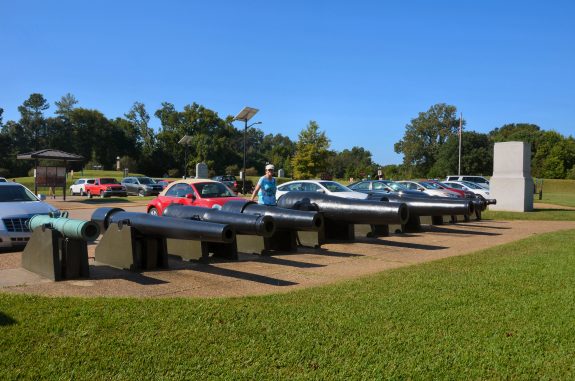 This morning we visited the Vicksburg National Military Park; which is a National Park so we entered for free with our senior lifetime NP Pass. We stopped at the Visitor Center and watched a 20-minute overview movie of the siege of Vicksburg. During the Civil War, Vicksburg was a major source of food, ammunition and other supplies for the Confederates. The Union Army’s strategy was to seize total control of the Mississippi River, thereby splitting the confederate states into the western states and eastern states. Vicksburg was the last river city that the Union Army needed to seize control of to have free access on the river from New Orleans to Rock Island Arsenal in Illinois. This park provides an array of monuments, erected by each state, in memory of the
This morning we visited the Vicksburg National Military Park; which is a National Park so we entered for free with our senior lifetime NP Pass. We stopped at the Visitor Center and watched a 20-minute overview movie of the siege of Vicksburg. During the Civil War, Vicksburg was a major source of food, ammunition and other supplies for the Confederates. The Union Army’s strategy was to seize total control of the Mississippi River, thereby splitting the confederate states into the western states and eastern states. Vicksburg was the last river city that the Union Army needed to seize control of to have free access on the river from New Orleans to Rock Island Arsenal in Illinois. This park provides an array of monuments, erected by each state, in memory of the  soldiers who fought and died in the siege of Vicksburg. We purchased an audio tour CD and spent about 3 hours following along on the tour. I recommend anyone planning to take this tour, to purchase this Audio Tour CD at the Visitor Center. It makes it easy to see the places around the perimeter of Vicksburg, where the two armies fought for 44 days. The CD has many stories and historical notes about the battlefield involved in the siege of Vicksburg. Backroad Planet web site has a very nice overview of the Park and Audio Tour.
soldiers who fought and died in the siege of Vicksburg. We purchased an audio tour CD and spent about 3 hours following along on the tour. I recommend anyone planning to take this tour, to purchase this Audio Tour CD at the Visitor Center. It makes it easy to see the places around the perimeter of Vicksburg, where the two armies fought for 44 days. The CD has many stories and historical notes about the battlefield involved in the siege of Vicksburg. Backroad Planet web site has a very nice overview of the Park and Audio Tour.
Probably the most interesting stop on the tour was at the U.S.S. Cairo Museum. This Iron Clad war ship was the first ship to be sunk by a torpedo (aka a submerged floating mine) in the history of the U.S. Navy. Ten of these Iron Clad boats were built in a period of 120 Days for a cost of $100,000 in 1862! The ships 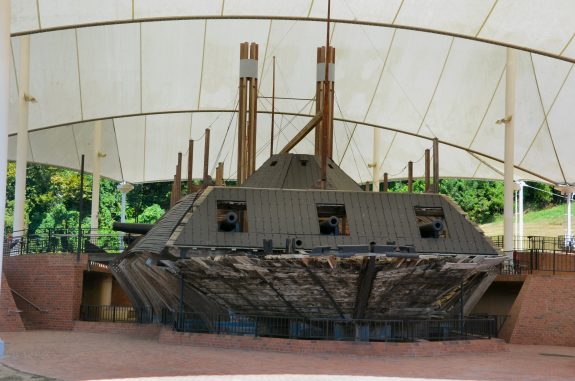 were very low draft, steam powered, stern wheel drive boats. They burned over 1 ton of coal / hour and achieved maximum speeds of 9 knots / hr. As you can see from the photos the ship had 10 cannons on each side of the ship and 3 in the forward bow. Ships like this were pivotal in the naval bombardment of the confederate fortifications on the 300-foot-high bluffs along the Vicksburg river front.
were very low draft, steam powered, stern wheel drive boats. They burned over 1 ton of coal / hour and achieved maximum speeds of 9 knots / hr. As you can see from the photos the ship had 10 cannons on each side of the ship and 3 in the forward bow. Ships like this were pivotal in the naval bombardment of the confederate fortifications on the 300-foot-high bluffs along the Vicksburg river front.
A Note: My Uncle founded “Federal Barge Lines” in St. Louis in the early 50’s. The company provided and managed barge traffic on the Mississippi River for several decades. The real interesting point, is the ship yards that built the Iron Clad war ships, were the same yards that built many of the modern tow boats, used by Federal Barge lines. Also, as a teenager, I spent a summer working as an oiler on a tow boat, working from St. Louis to New Orleans. So, I have a great affinity for the river and for the stories created by Samuel Clemens.
Visit to Army Corp of Engineers Museum and other sites along river in Vicksburg

Today, here in Vicksburg, we will visit the “Lower Mississippi River Museum”; which has information about Army Corp of Engineers.,. When we planned the drive along the great river road, I wanted to re-visit the Corp of Engineers river modeling facility I first visited in the late 1960’s. My early visits were to work on some river modeling displays, using our 30” full color inkjet printer we had built for the Navy. I learned today those river models are no longer in use or most don’t even exist anymore! They have replaced them with computer assisted modeling of the Mississippi river using Super Cray computers. Bummer, I had hoped to show Sue the models of the major ports and river estuaries of the United States.
 We spent time in the LMRM, and learned about some of the work now being done by the Corp of Engineers. A major project is how to control the non-native Asian Carp, which have invaded most of the Mississippi river basin. They also have a division that works on engineering materials and portable structures to protect armed forces from assaults from RPG’s and Mortars. The visual displays of actual tests were very impressive. One of their systems is how to improve the walls and roofs of existing buildings. They had treated the east wall of the Pentagon, about 6 months prior to 911 crash of an airliner into the building. Offices that were only 50 feet away from the direct hit were totally intact; while offices in the inner rings of the same side of the Pentagon, were destroyed. Again, very impressive use of material science to solve real world problems.
We spent time in the LMRM, and learned about some of the work now being done by the Corp of Engineers. A major project is how to control the non-native Asian Carp, which have invaded most of the Mississippi river basin. They also have a division that works on engineering materials and portable structures to protect armed forces from assaults from RPG’s and Mortars. The visual displays of actual tests were very impressive. One of their systems is how to improve the walls and roofs of existing buildings. They had treated the east wall of the Pentagon, about 6 months prior to 911 crash of an airliner into the building. Offices that were only 50 feet away from the direct hit were totally intact; while offices in the inner rings of the same side of the Pentagon, were destroyed. Again, very impressive use of material science to solve real world problems.


One of the major contributions of the Corp is the control of flooding along the Mississippi River watershed. The great flood of 1927 covered almost every state in the watershed from Illinois to Louisiana, displacing over 10 million people from home and shelter. Another flood in 1976 of an even greater magnitude, had only minor affect, because of the engineering changes applied to the Mississippi River. One of the key components is the re-enforcement of the river bank using concrete blankets designed, engineered, manufactured and installed by the Corp. As a country, we owe the employees of the Corp a great deal of gratitude. Photos above show the process of creating and installing these concrete blankets on the river banks.
Visit to Baton Rouge River Center
We camped in KOA of Baton Rouge. Fortunately, we had reserved our campsite in February, because of the floods in the city last month, all sites are permanently booked for folks who lost everything in the floods. We saw block after block of neighborhoods with water soaked refuse from the flooded homes, lining the streets. There were signs all along all roads offering various repair services.

We started our exploration by visiting the city center to view the old state capitol, which is a must see on any visit to the city. We were surprised to see the extend of the development on the river front in the center. The old state capitol is a majestic building, with a soaring rotunda around a massive spiral staircase.

Huey Long is the famous governor of Louisiana that significantly change the fortune and lives of citizens in the state in the early 1900′ into the mid 90’s. I remember in my own high school (1950 – 1954) our history teacher was extoling the virtues of his civil rights efforts. It was a very interesting self-guided tour of the old capital building. One of the rooms talked about the devastating effects of the Great Depression o the state, since its primary source of income in the 1920’s was agriculture. However, movies were a part of everyone’s weekly social events. In order to lure folks back to the movies, they adopted the practice of offering a dish or bowl when you paid your 27 Cents to view the movies of the week. Eventually, Standard Oil, built a massive refining complex along the river; which dramatically boosted the standard of living in southern Louisiana.
A visit to the Nottoway antebellum mansion

On the 24th, we drove about 30 miles south on the western side of the Mississippi River from Baton Rouge to Nottoway Plantation Mansion. This supremely preserved antebellum mansion is the largest and best preserved. We had a wonderful guide who led us thru the home and offered insights into the creation and working of the Mansion from when it was first occupied up to the early 1950’s.
Completed in 1859, Nottoway’s 53,000 square foot palatial white mansion awes visitors with its 64 rooms and countless extravagant features like 22 massive exterior columns, 12 hand-carved Italian marble fireplaces, exquisitely detailed plaster frieze moldings, soaring 151⁄2-foot ceilings, enormous 11-foot doors and a lavish pure white oval ballroom, as well as unheard of innovative features, like modern bathrooms with running water and a gas plant providing gas lighting throughout the home.
The construction of Nottoway was commissioned by John Hampden Randolph, a very prosperous sugar planter, to be the ultimate showplace of his wealth. He wanted no expense spared and ordered that it include every extravagance and innovative feature possible. Stately, opulent Nottoway would be home to John, his wife, Emily Jane Randolph, and their 11 children, but also the perfect setting in which to elegantly and dramatically entertain their many visitors.
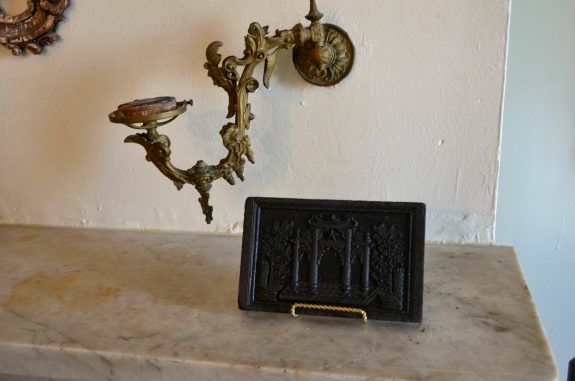 It was interesting to learn that a single 2-pound block of Chinese Tea and could make over 300 cups of tea, which was more highly prized than the family jewels. All the original chandeliers were powered by gas created by a slave operating a device using waste from the sugar crane operations and resin from pine cones.
It was interesting to learn that a single 2-pound block of Chinese Tea and could make over 300 cups of tea, which was more highly prized than the family jewels. All the original chandeliers were powered by gas created by a slave operating a device using waste from the sugar crane operations and resin from pine cones.
All the bathrooms attached to several of the upstairs bedrooms had heated water, again provided by a slave manning a boiler in an out building. They also had servant call buttons wired to bells in the servant’s quarters, just as shown in the Downton Abbey TV program. Since they were prohibited from teaching slaves how to read, they used a series of different tones to signal which room needed service.

Sue and I enjoyed a wonderful lunch in the restaurant of the resort, and toured the grounds afterwards, before heading back to our RV.
On our way back to the KOA Campground, we stopped to see a Canal Lock in Plaquemine, Louisiana. This lock was used to provide access from the Mississippi River into the bayou’s where cypress wood was harvested. The lock closed in 1960, being replaced by a much larger set of locks on the Intercostal waterway near the Mississippi River across
from Baton Rouge. When this lock was operating, it lifted boats over 50 feet to clear the levees along the Mississippi River.

New Orleans – Visit to WWII Museum

On the 25th, Sue and I drove south from Baton Rouge to Convent, Louisiana, staying in the Plantation Inn RV Park and Campground for four days. This area of Mississippi is a source for coal, timber and rice, which are harvested and loaded onto ocean going freighters on the river.
Yesterday we left the RV in place and drove our tow car into New Orleans for a two night stay at the Drury Inn, near the Superdome, but a nice walk to the French Quarter.
On the 26th, we opted for a late lunch at the Red Fish Grill on Bourbon Street. A great meal of red fish, grab claws, bouillabaisse and chocolate bread pudding for desert. We spent the afternoon browsing the shops in the old French Quarter. Sad to say, the quarter has seen better days, the streets a filled with cigarette butts, food containers, and human feces’! The buildings are not being kept up, even the venerable Brenan’s Restaurant, is showing its age in the dining room.
After lunch, on the 30th, we went to visit the WWII Museum. This Museum was built over the past 6 years, so we had never visited it on previous trips. This is indeed a fantastic place to visit. As the name says, it is a museum about America’s engagement in the World War II. The death statistics are unfathomable, US 314 Thousand, Great Britain 634 Thousand, Germany 11 Million, Russia 23 Million. Because of the incredible production of war materials in the US, at the end of the war we turned out 3 Liberty ships per day, 1 B17 Liberator per day and one B21 Bomber / week. We also produced over 634 Thousand Jeeps and over 250 Thousand trucks. Americas engagement in WWI was truly amazing when you consider at the start of the war there were more horses in the Army than tanks. By 1942 the US was able to take the battle to the Axis powers in Europe and Africa and the Japanese in the western pacific.
They have a building which is entitled `The Road to Berlin’ which covers the Allied efforts to defeat the Nazis on the European and African continents. Another building has and exhibit named “The Road to Tokyo” and covers the engagement of America and Australia to defeat the Japanese after the surprise attack at Pearl Harbor. Each building has a self-guided tour thru exhibits of WWII artifacts, newsreels of the time, and stories of individual soldiers who fought in some of the key battles of all the campaigns that resulted in the defeat of the Axis powers. There is another building, sponsored by Boeing, showing some of the key aircraft it built for WWII. An example of the B17, is the plane, named My Gal Sal, that crashed on a glacier near Iceland as it was being flown to England. Eventually the aircraft was purchased by a man in Connecticut and it was restored to its original condition, and now hangs in this museum exhibit.
We Visit Cajun Country West of New Orleans
September 28th, we had a leisurely breakfast in the hotel, before driving back to our RV. After lunch we headed south and west of New Orleans, in our tow car to check out the Cajun Country. Much of the area west of New Orleans is Bayou country and home to a large number of Acadians (or Cajuns).
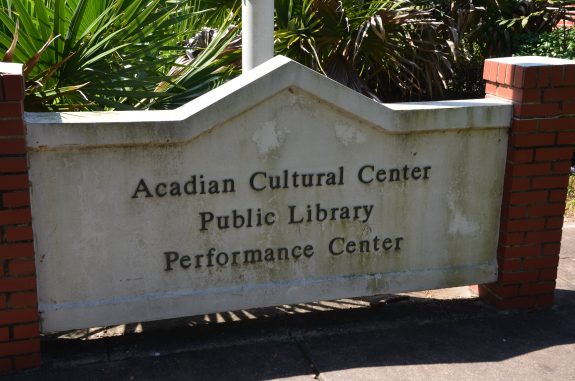 The original Acadians settled in what today is Nova Scotia, at about the same time the Mayflower arrived in America. Over the next 100 years the British and the French controlled the area. The British decided to deport all the members of communities and sent over 10,000 of them to other colonies along the Atlantic Coast. However, the other colonies did not know they were coming, and when they finally arrived, they received no help in settling. Eventually, most of the survivors returned to France, where they we similarly shunned. After about another 100 years some of Acadians sailed to the Louisiana Territory, and have been in this area since the early 1700’s. We enjoyed a 30-minute documentary movie about the history of the Acadians; which I have encapsulated above. Then we toured the exhibits in the Cultural Center. Next we drove further in the Bayou country looking for wild life in the swamps. We tried a nature trail, but failed to find any wild life, so we drove back to the RV. A bit disappointed in this adventure.
The original Acadians settled in what today is Nova Scotia, at about the same time the Mayflower arrived in America. Over the next 100 years the British and the French controlled the area. The British decided to deport all the members of communities and sent over 10,000 of them to other colonies along the Atlantic Coast. However, the other colonies did not know they were coming, and when they finally arrived, they received no help in settling. Eventually, most of the survivors returned to France, where they we similarly shunned. After about another 100 years some of Acadians sailed to the Louisiana Territory, and have been in this area since the early 1700’s. We enjoyed a 30-minute documentary movie about the history of the Acadians; which I have encapsulated above. Then we toured the exhibits in the Cultural Center. Next we drove further in the Bayou country looking for wild life in the swamps. We tried a nature trail, but failed to find any wild life, so we drove back to the RV. A bit disappointed in this adventure.
Lunch time visit to historical Cajun Village


September 29th, we drove from the New Orleans to Houston, Texas and stopped in Lafayette, Louisiana for a visit to a historical Cajun Village. Like the Cajun Cultural Center, we visited in Thibodaux, this one embled a collection of early 1800’s homes originally built in the surrounding bayous. Before we strolled thru the village, we had a turkey lunch in the center’s restaurant. They served turkey breast with Cajun spices (not too hot), baked brown beans and brown rice, with salad on the side. A very enjoyable culinary experience.


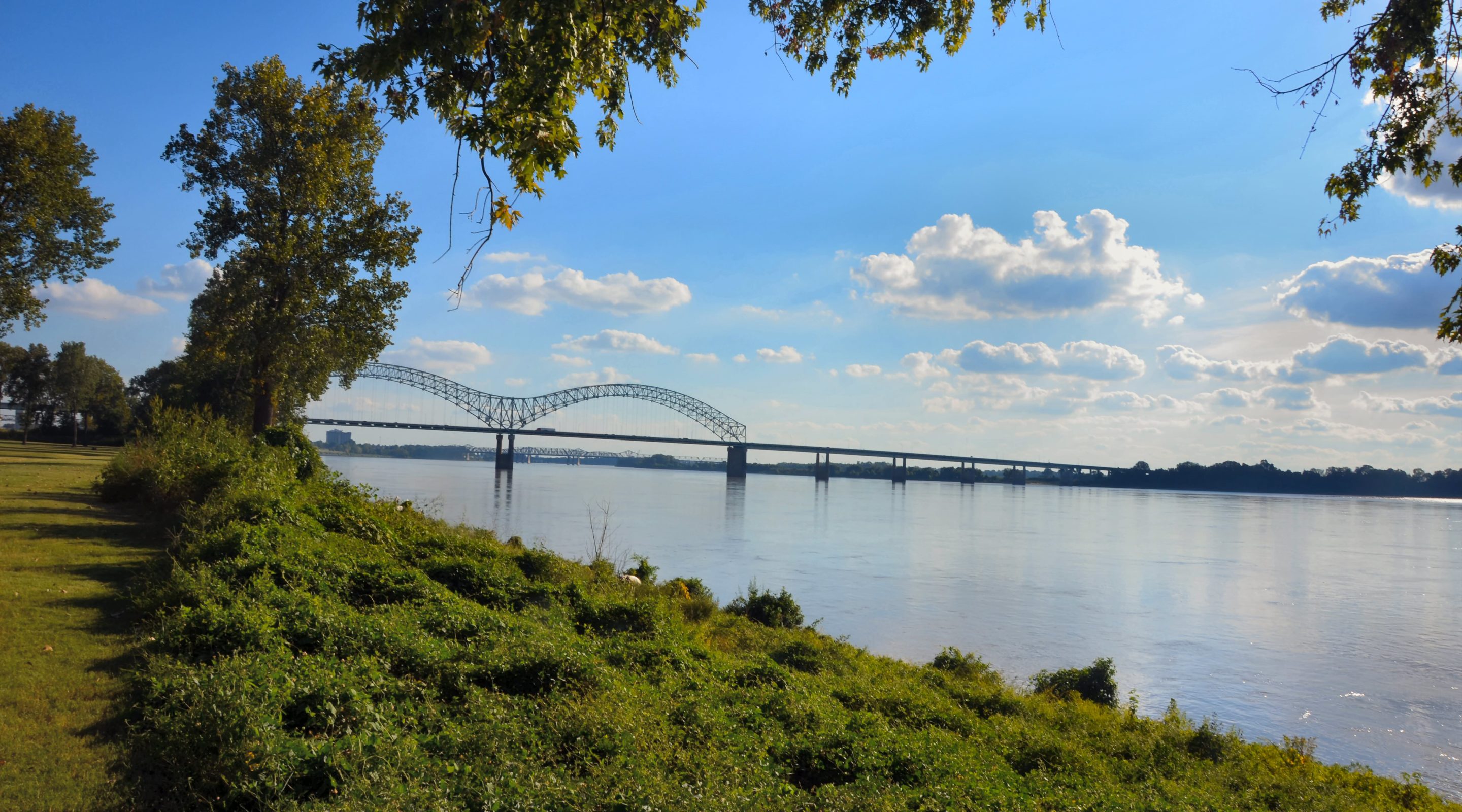

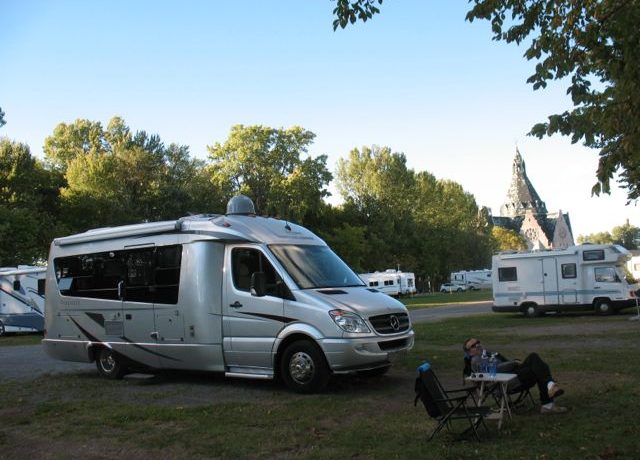

Comments